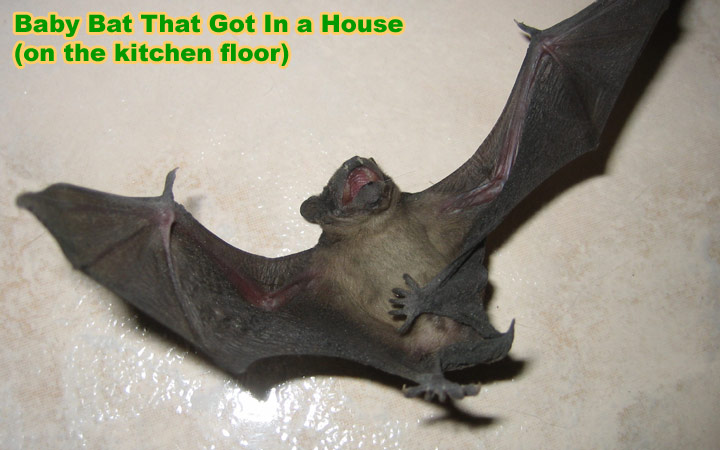
Caring for a Baby Bat: A Comprehensive Guide
Introduction
Bats, often misunderstood and feared, are fascinating creatures that play a vital role in our ecosystem. As nocturnal mammals, they are essential for insect control, pollination, and seed dispersal. However, baby bats, known as pups, are particularly vulnerable and require specialized care if they are to survive.
This comprehensive guide will provide you with the essential knowledge and techniques to care for a baby bat, ensuring its well-being and maximizing its chances of survival.
Assessing the Situation
Before attempting to care for a baby bat, it is crucial to assess the situation and determine if intervention is necessary.
- Observe the pup: If you find a baby bat on the ground, observe it closely. Is it injured, cold, or abandoned? If it is active, alert, and appears healthy, it may not require assistance.
- Check for the mother: Search the area for the mother bat. She may be nearby and waiting for you to leave. If you cannot locate the mother, proceed with caution.
- Contact a wildlife rehabilitator: If you are unsure about the pup’s condition or if it appears to be in distress, contact a licensed wildlife rehabilitator immediately. They have the expertise and resources to provide proper care.
Providing Emergency Care
If the baby bat requires immediate attention, follow these steps:
- Keep it warm: Place the pup in a warm, dark, and quiet place. Use a heating pad set to low or a warm water bottle wrapped in a towel.
- Do not feed it: Baby bats have specialized dietary needs and should only be fed by a qualified rehabilitator.
- Handle it gently: Wear gloves when handling the pup to avoid transmitting diseases. Hold it securely but gently, supporting its head and body.
- Contact a rehabilitator: As soon as possible, contact a wildlife rehabilitator for further care and guidance.
Long-Term Care
If you are caring for a baby bat for an extended period, it is essential to provide proper nutrition, shelter, and socialization.
Nutrition
- Formula: Baby bats require a specialized formula that mimics their mother’s milk. Contact a wildlife rehabilitator for the appropriate formula and feeding instructions.
- Feeding schedule: Feed the pup every 2-3 hours, gradually increasing the amount of formula as it grows.
- Feeding method: Use a syringe or dropper to gently feed the pup. Avoid overfeeding, as this can lead to regurgitation.
Shelter
- Enclosure: Provide a warm, dark, and draft-free enclosure for the pup. Line it with soft materials such as fleece or towels.
- Temperature: Maintain a temperature of 85-95°F (29-35°C) for the first few weeks. Gradually reduce the temperature as the pup grows.
- Humidity: Keep the enclosure humid by placing a shallow dish of water inside.
Socialization
- Handling: Handle the pup regularly to accustom it to human contact. This will help reduce stress and prepare it for release.
- Vocalization: Talk to the pup and encourage it to vocalize. This will help it develop its communication skills.
- Playtime: Provide toys and activities to stimulate the pup’s physical and mental development.
Hygiene
- Cleaning: Keep the enclosure and the pup clean to prevent infections. Use a damp cloth to wipe down the enclosure and the pup’s body.
- Bathing: Bathe the pup occasionally using warm water and a mild soap. Rinse thoroughly and dry it gently.
- Parasite control: Check the pup for parasites and treat them if necessary. Contact a wildlife rehabilitator for guidance.
Release
The ultimate goal of caring for a baby bat is to release it back into the wild. However, it is crucial to ensure that the pup is healthy, strong, and has the necessary skills to survive.
- Age and weight: Baby bats are typically released when they reach a certain age and weight. This varies depending on the species.
- Flight ability: The pup should be able to fly and navigate before it is released.
- Socialization: The pup should be socialized with other bats to develop appropriate behaviors.
- Habitat: The release site should provide suitable habitat and food sources for the bat.
Contacting a Wildlife Rehabilitator
It is highly recommended to contact a licensed wildlife rehabilitator for assistance in caring for a baby bat. They have the expertise, resources, and facilities to provide the best possible care and ensure the pup’s successful release.
Conclusion
Caring for a baby bat is a rewarding but challenging experience. By following the guidelines outlined in this guide, you can provide the necessary care to ensure the pup’s well-being and give it the best chance of survival. Remember to always prioritize the safety and welfare of the animal and seek professional assistance when needed.
